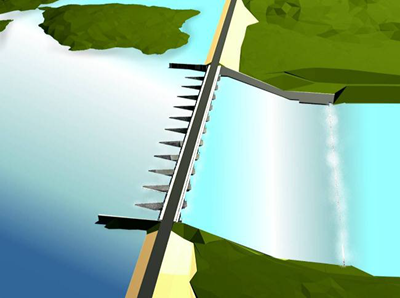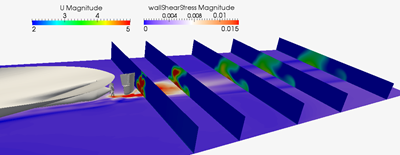Combining CFD and MIKE by DHI models to simulate complex structures
DHI Singapore launched a research project to develop rapid and ‘easy-to-use’ methods for load and response simulation of complex nearshore and offshore structures.
DHI Singapore launched a research project to develop rapid and ‘easy-to-use’ methods for load and response simulation of complex nearshore and offshore structures. Far field simulation will be based on integrated two dimensional (2D) and three dimensional (3D) models (MIKE 21 and MIKE3 respectively). Near field simulations will be based on a Computational Fluid Dynamics (CFD) solver. Our experience in several commercial and research projects will be useful for the development of the methodologies and tools.
In order to achieve a safe, yet cost-effective foundation for nearshore and offshore structures, it is imperative to predict load and response of the structures in detail. A non-linear Navier-Stokes CFD solver is often required to resolve the detailed response of for instance, viscous effect. However, this type of simulation has high computational demands. From a practical point of view, CFD simulation must be limited to an inner region surrounding the structure.

Fig 1: Illustration of labyrinth Weir model. A MIKE 21 model yielded the upstream boundary conditions and the CFD model was used to simulate the weir discharge capacity

Fig 2: CFD model simulation results showing the flow field and bottom shear stress around a moving vessel
|
Depth-integrated 2D models have been applied for many years with great success in design assessment of coastal and offshore structures. This type of model is much faster than a CFD solver. However, it cannot resolve the detailed flow and loading on structures as well as CFD models can.
Combining CFD and MIKE by DHI models will allow for comprehensive load/response studies of complex structures.
We have previously conducted such simulations in several projects, including:
- Punggol Environmental Impact Assessment (EIA) study, Singapore – an EIA study of the Punggol channel. We applied the results from detailed CFD studies of mixing capability of jets in a Mike 11 model of the complete channel. An ecological model simulated the impact of the additional aeration of jets on the water quality
- Simulation of wave run-up on wind turbine foundations. We applied Mike 21 BW to the far field region and used its results as boundary conditions for a CFD model. This model simulated non- linear details of the wave run-up and breaking waves near the structure
- Flow over a labyrinth Weir. We modelled the far field in Mike 21. We then applied the results as boundary conditions for a CFD model, that resolved details of the flow over the weir (See figure 1)
- Propeller wash project. We applied the results of detailed CFD simulations of ship propeller-induced scour in a Mike 21 model (See figure 2)
Read more